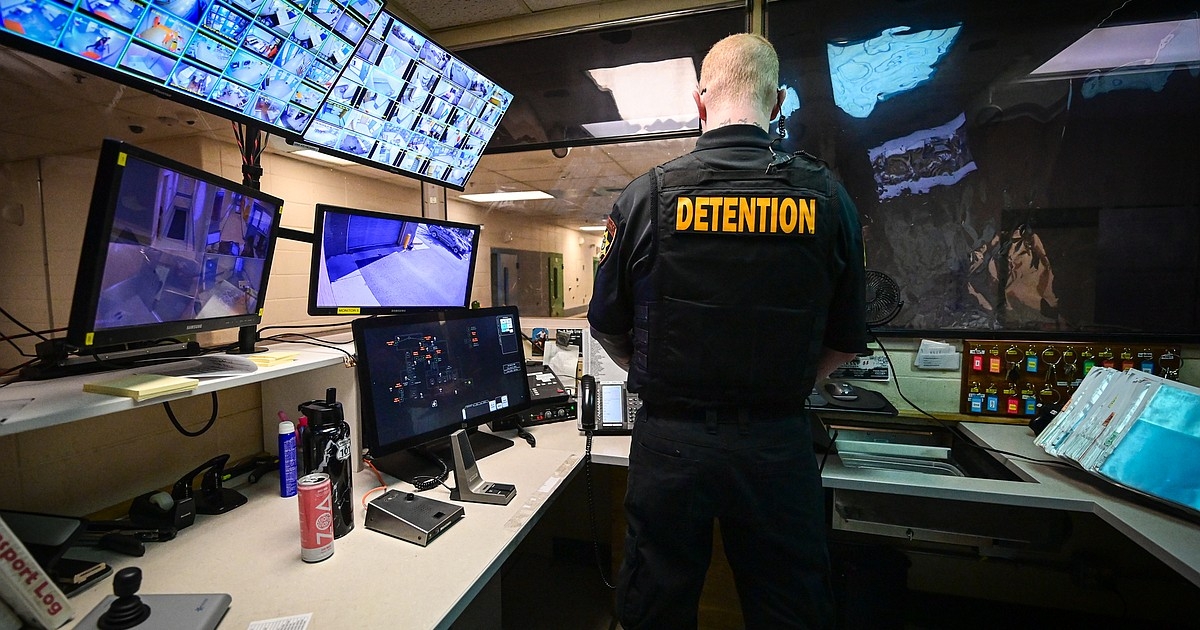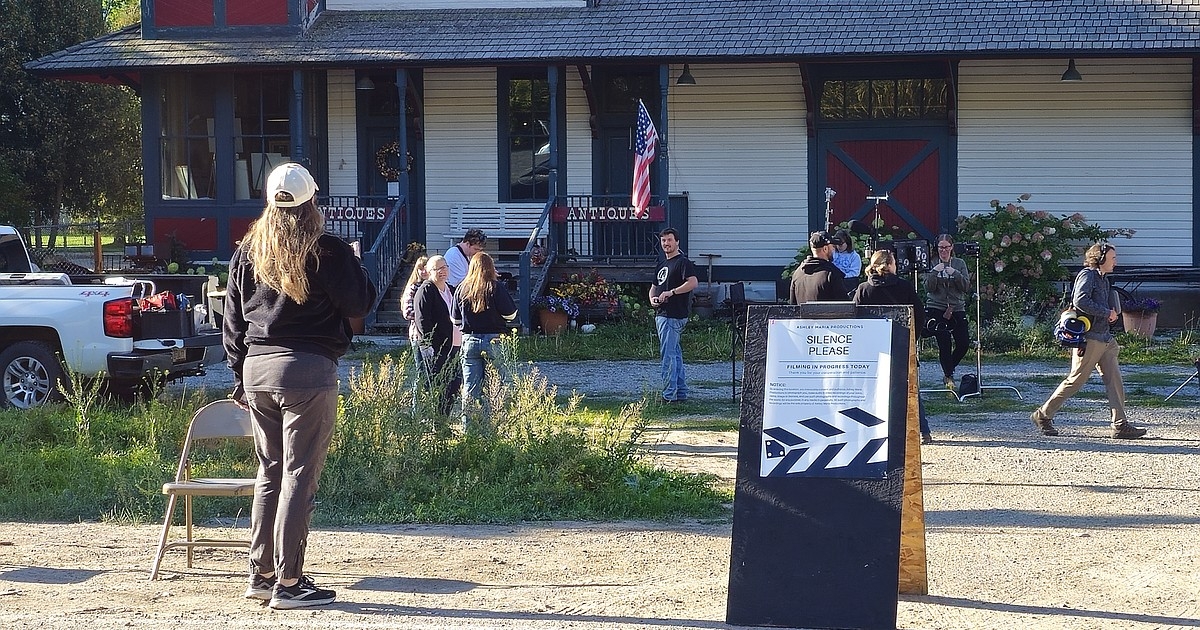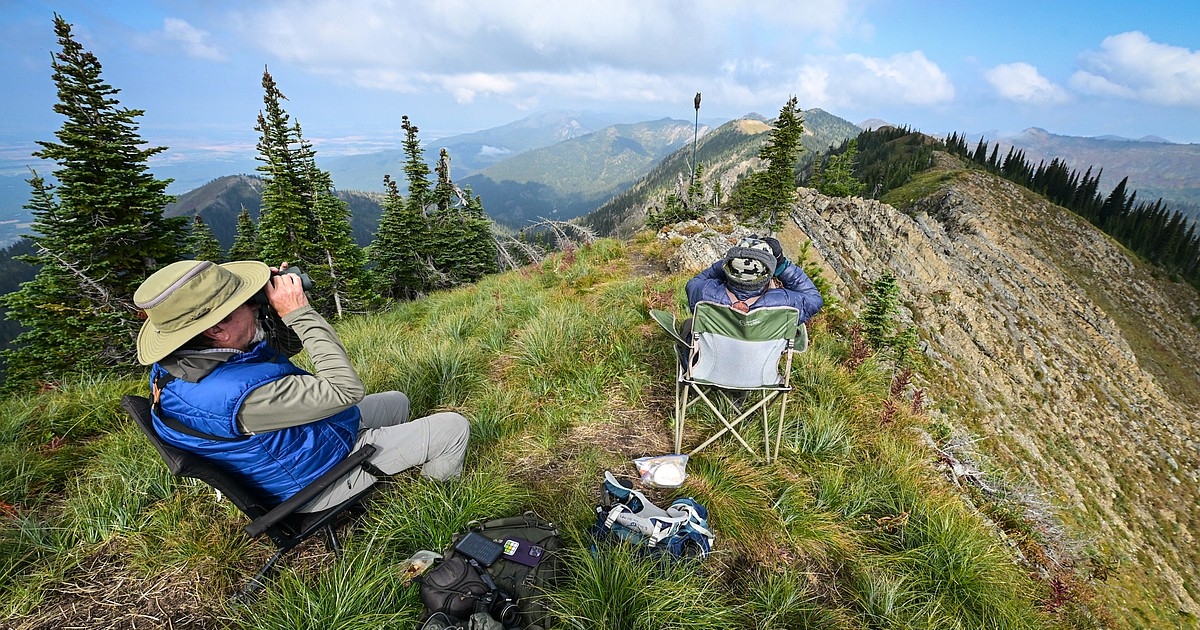Description
Detention officers stood alert next to an open cell in the jail’s medical wing, Tasers ready.
The woman inside was scheduled for a virtual court hearing, and three officers were on hand to move her through the facility.
“Officer Horner, where’s your spit mask?” Flathead County Detention Center Commander Jenny Root barked.
Plastic masks covered the other officers’ faces to protect them from projectile saliva. The most severely mentally ill inmates are kept in the medical wing, and they’ve been known to spit.
On occasion, they bite.
Root boasts a scar on her upper forearm after an inmate tore out a chunk of flesh with their teeth. It’s just a part of the job, she said.
An officer dashed around the corner into the booking lobby to grab the piece of protection for her maskless colleague. By the time she returned, it was no longer needed. The inmate was refusing to see the judge.
“You know you’re just going to be kept in here longer, right?” Root told the woman.
The inmate said she didn’t care. Since the officers couldn’t move her against her will, they shut the door and went back to their assigned posts.
For almost two decades, the Flathead County Detention Center has dealt with overcrowding, unsafe working conditions and limited space for inmates with mental health needs. After years of debate, county officials have put a $105 million bond on the November ballot for a new detention center that they say will address the current facility’s failings.
The new jail is designed to hold 200 inmates, double the current capacity. An additional 42 beds in the special housing unit would be reserved for inmates charged with violent offenses or in need of medical or mental health care.
“We didn't think we'd have to deal with the mental health [issues], where we'd need all these single cells,” said Sheriff Brian Heino. “We're just running out of room, and then the capacity issue on top of that.”
The medical wing was intended to treat inmates who are sick or suffer mental illness, but now it’s almost always full of individuals with extreme mental health needs.
“We very rarely have actual people who are sick down here,” Root said. “Our worst of our worst mental health are down here.”
CHIEF BRENNA Schaible cringes every time she watches three twentysomethings move a dangerous inmate upstairs from the medical wing. Most detention officers are young, she said, between 18 and 23 years old.
The special unit in the new detention center would have its own outdoor recreational unit, she said, eliminating the need to move high-risk inmates across the facility.
“You're not taking these inmates out of their cell and moving them down these long halls just to get them some outdoor rec time," Schaible said of the new facility’s design plan. “There’s less officer-inmate movement.”
The special housing unit will be separated from the main lobby, which will give detention officers a break from the banging and shouting in the medical units.
Heino and Root want to see working conditions improve for staff in the new detention center. A modern layout will make it easier to keep an eye on inmates. Instead of long corridors, cell units will be layered on top of each other around the control desk. Skylights installed in the ceiling are hoped to boost morale with increased natural sunlight.
“A new jail isn't just about housing more inmates,” Root said. “It's about a safer environment for our staff.”
Detention officers work 12-hour shifts in dimly lit halls, with no windows or doors that lead outside. Water stains cover the ceiling, and patches of tiles are missing. A faint scent of cleaning chemicals clings to the air.
The jail is a full-time job for its maintenance crew.
Sewage water often floods the cell units and spills into the hallways. It’s gotten to a point where maintenance workers gave up replacing damaged ceiling tiles, Root said.
“When it floods in here, our staff is walking through it,” she said.
Inmates have made a habit of flushing objects down the toilet to clog the pipes and flood their cell units. The pipes themselves haven’t been replaced since the jail was built back in 1986.
“People will say, ‘Well, don't let them flush things,’” Root said. “But these aren't the best-behaved inmates.”
When pipes get clogged, sewage water spills over into the detectives’ offices, evidence room and the undersheriff’s desk. The smell soaks into the cement and is nearly impossible to scrub out.
The water system in the new jail is designed to prevent flooding. A pin in the pipes stops flushed objects from traveling down the system. Toilets will automatically shut off if an inmate tries to flood their cell unit.
“The toilets are our favorite part,” Root said of the design.
Power outages and electronic failures have also plagued the jail.
In September, the Kalispell Fire Department responded to a midnight call from the county jail. An inmate was trapped in their cell after the electronic door failed to unlock.
“If there's a medical emergency, we have no way of getting to them,” Root said. “We called in maintenance and everything.”
THE SHERIFF and jail commander have encouraged voters to tour the nearly 40-year-old detention facility to better understand why a $105 million bond is on the ballot.
If approved, property taxes would increase by $11.13 for homes valued at $100,000 in the first year. For homes valued at $300,000, property taxes would go up by $33.38. And for homes valued at $600,000, property taxes would increase by $76.72.
Flathead County Commissioner Pamela Holmquist, who has taken the tour herself, described it as an eye-opening experience.
"I would recommend anybody out there [to] please take a tour, just to know the need,” Holmquist said, “because it's obvious.”
Discussions over building a new jail began 15 years ago, Holmquist said, with former county Sheriff Chuck Curry. Last year, the county purchased 114 acres on Snowline Lane for a new detention facility. The Kalispell City Council is considering annexing the property into the city, which would allow the detention facility to tap into the city’s water, sewer and fire protection services.
If the bond fails to pass Flathead County voters, Heino said he’ll consider putting it before voters again in the following election.
“The scary part is construction costs are going up,” he said.
Estimated construction costs nearly a decade ago were around $50 to 60 million; this year it’s at $105 million.
“The cost of things just seems to continually go up,” Heino said. “But, again, it's up to the voters.”
Reporter Hannah Shields can be reached at 758-4439 or [email protected].
Other Related News
10/19/2025
When Carolyn Rutherford began teaching in 1996 she wanted to help people live better live...
10/19/2025
Filming has taken place in Western Montana for a new short film backed by the Montana Big...
10/19/2025
In the dark of night a kayak glides along the shoreline Headlamps cut through the darknes...
10/19/2025
Dan Casey saw the bird first shimmering against the distant horizon like a desert mirage ...
10/19/2025












